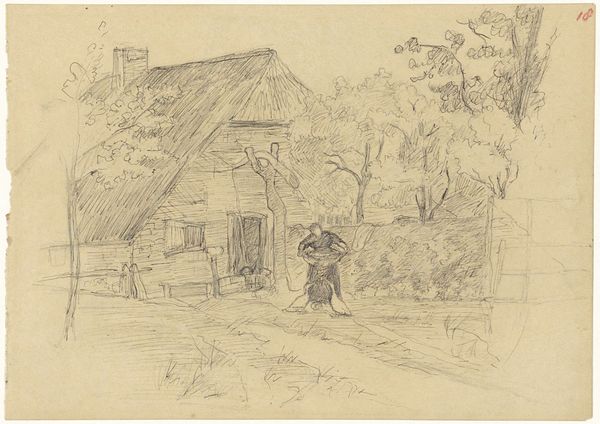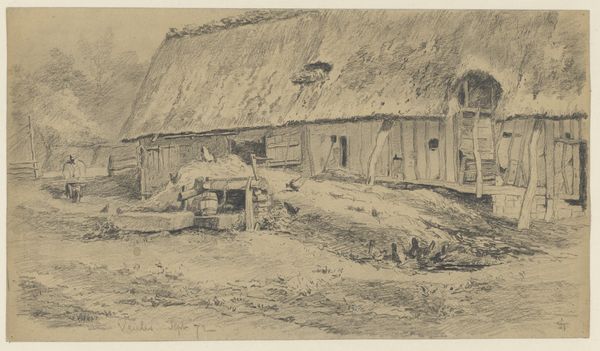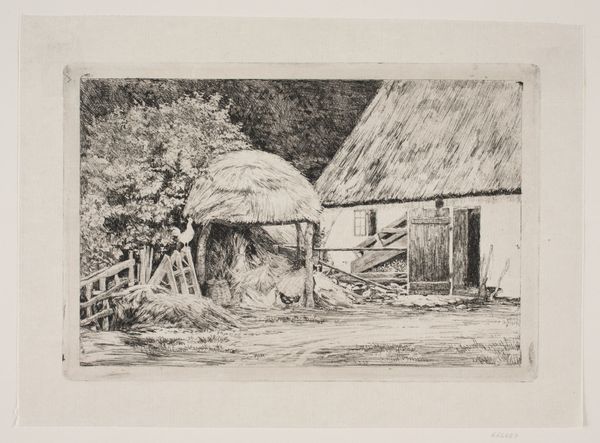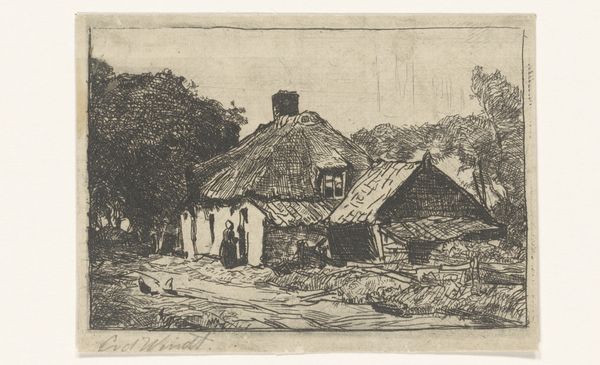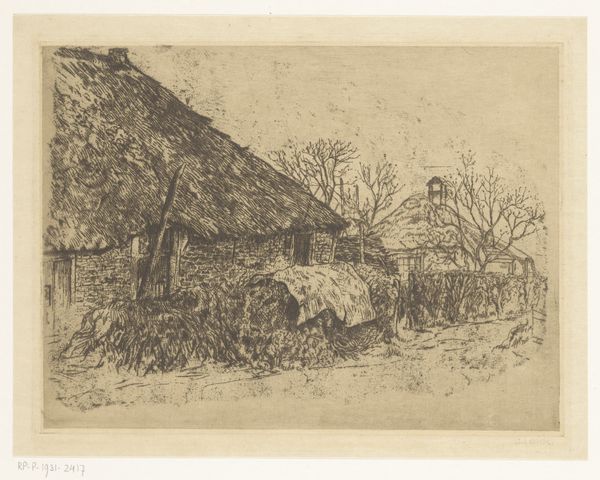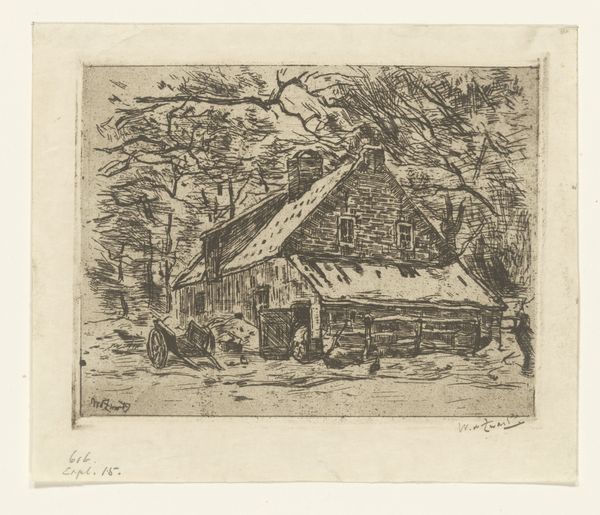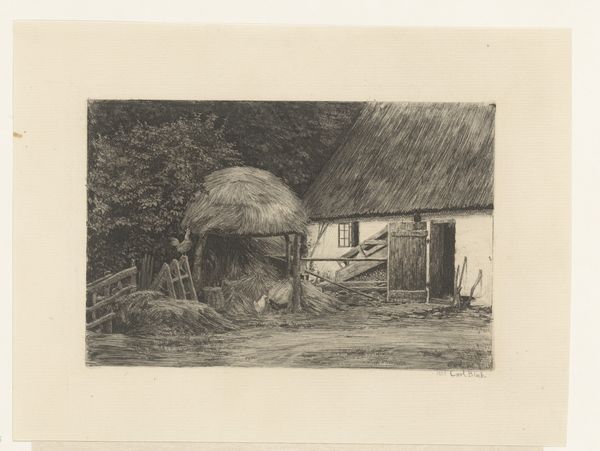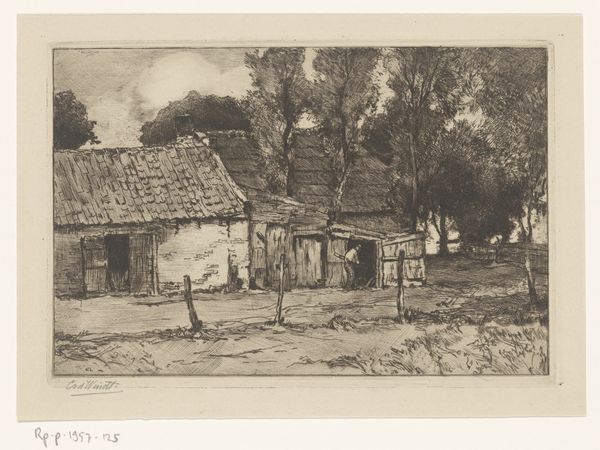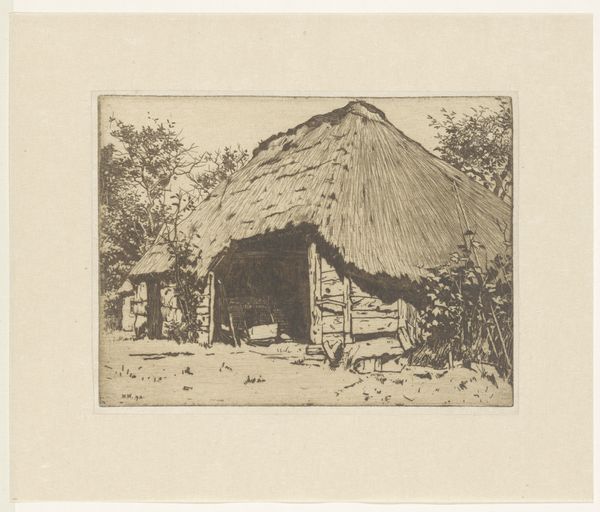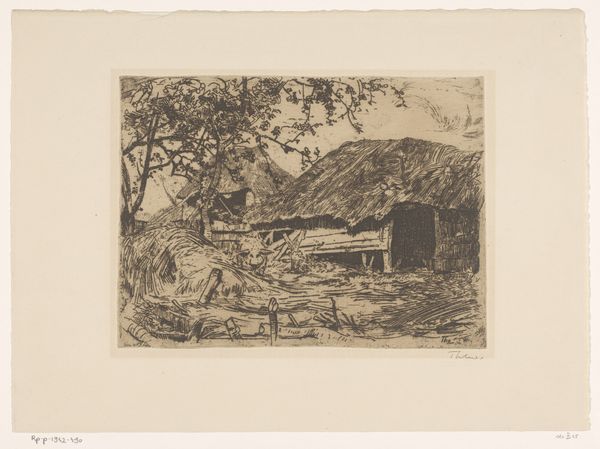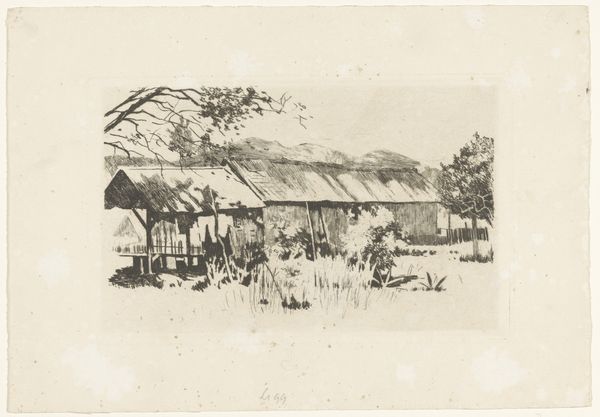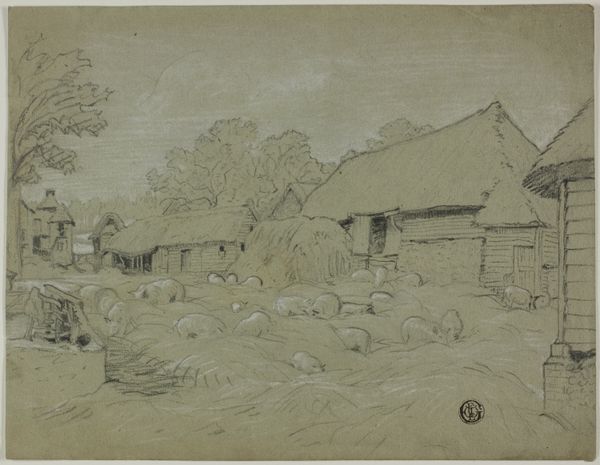
drawing, pencil, charcoal
#
drawing
#
pencil sketch
#
landscape
#
pencil
#
charcoal
#
realism
Dimensions: height 267 mm, width 388 mm
Copyright: Rijks Museum: Open Domain
Curator: Okay, let's talk about this drawing, "Schaapskooi te Wezep," which roughly translates to "Sheep pen at Wezep," made by Simon Moulijn sometime between 1876 and 1948. It’s a simple landscape using pencil and charcoal. What's your take? Editor: Immediate feeling? It's melancholic. The heavy charcoal, the looming structures, there’s a weightiness. Like the quiet after a storm, or the calm acceptance of rural hardship. It brings a contemplative silence. Curator: Yes! The charcoal definitely lends that somberness, doesn't it? Look at how he's rendered the thatched roofs; those deep, dark lines really convey age and wear, but the scene feels also comforting somehow. Almost romantic in its simplicity, but tinged with the inevitable struggle for existence in those times. Editor: Struggle is right. These weren’t just idyllic farm scenes. The drawing invokes a history of land ownership, rural labor, and social hierarchies. The peasants, tenant farmers… who worked those lands? What were their lives really like beyond the picturesque facade? We can feel all of that history embedded in those roughly sketched lines. The shadows remind us that these communities have often been marginalized and overlooked. Curator: Absolutely. It's interesting how Moulijn has chosen this viewpoint, just slightly distant, almost as though he’s observing from the edge of things. And yet there’s such an intimacy in the way the buildings and that haystack are rendered. He gives us a clear sense of his careful observation of a commonplace scene, almost loving—not in a sentimental way, but grounded in a keen familiarity with the daily life on a farm. Editor: Do you think that the artist was drawing from life, maybe doing studies and notes while sitting outside, or working from memory, adding, maybe, some constructed romantic ideas? This "realistic style" makes me question who the artist was, who was he depicting these landscapes for, and for what purposes. There were, for a long time, huge societal asymmetries involving representation, so it is pertinent to raise those questions. Curator: Those are valid concerns; who are we seeing, and whose stories are being told? Looking closely I see a quick, assured style, especially the trees on the left; perhaps it was made in the field. These were probably working drawings, which feels important. A quick notation to remember, or re-create. Not meant to be pretty, maybe, but definitely honest in a way. Editor: I feel so strongly how, sometimes, these images could work like subtle ideological endorsements. To be confronted with that is complicated, as it makes one engage from both aesthetic and theoretical standpoints, which I guess enriches the whole experience. Curator: Exactly. Art can reflect, reinforce, but it can also reveal the deeper undercurrents of its time. This modest sketch reminds me of our entangled, difficult history, in ways I didn't anticipate. Thank you for bringing that to the front, because these are necessary voices for the conversations!
Comments
No comments
Be the first to comment and join the conversation on the ultimate creative platform.
